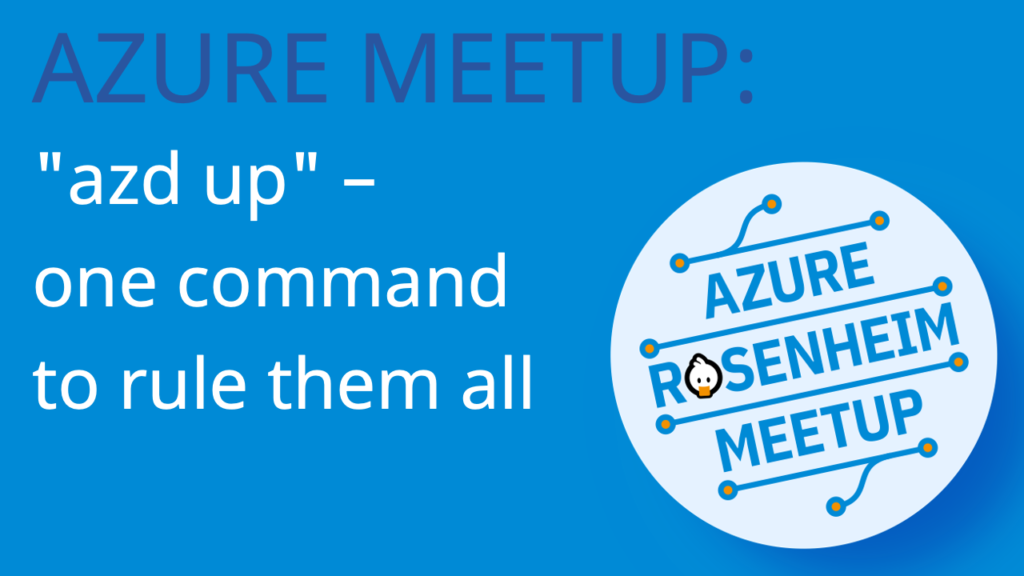Microsoft Build – Our Cloud-Native Recap
Last week the Microsoft Build took place in Seattle as a hybrid event. We joined virtually to learn about the latest updates for building cloud-native applications on Azure. So, follow along to read about the most important announcements and news from the event.
Contents
What is Microsoft Build?
Microsoft Build is an annual conference where developers and technology enthusiasts gather to learn about the latest advancements in Microsoft technologies. It includes keynote presentations, technical sessions, and workshops, covering various topics such as cloud computing, AI, web development, and more. The event also serves as a platform for Microsoft to announce new products and engage with developers. Typically, all announcements made during Microsoft Build are summarized in the Book of News. This year’s edition can be found here.
News and Announcements
AKS application routing
AKS application routing simplifies accessing and managing applications on Azure Kubernetes Service (AKS) by providing DNS-based routes instead of IP addresses. During Microsoft Build the AKS product group announced, that ingress for your applications can now easily be configured via the Azure Portal instead of writing YAML files. You can pick a domain to manage through an Azure DNS zone and choose an SSL/TLS certificate from an Azure Key Vault. More details can be found here.
AKS Copilot
AKS Copilot will be your AI-powered assistant for the Azure Kubernetes Service. It provides resource generation debugging log analysis and much more. Furthermore, it will reduce skilling efforts, streamlining the development workflow for AKS applications, and empower developers. Additionally, it will be free for all clusters.
Kubernetes Apps
Kubernetes apps are now generally available. The partner ecosystem dedicated to ISV partners, enabling effortless deployment of their applications to AKS clusters. In addition to offering a marketplace of offerings, Microsoft will handle the entire process of deployment, billing, and lifecycle management for the deployed apps. This significantly simplifies the process for customers to deploy cloud-native applications and receive support on AKS:
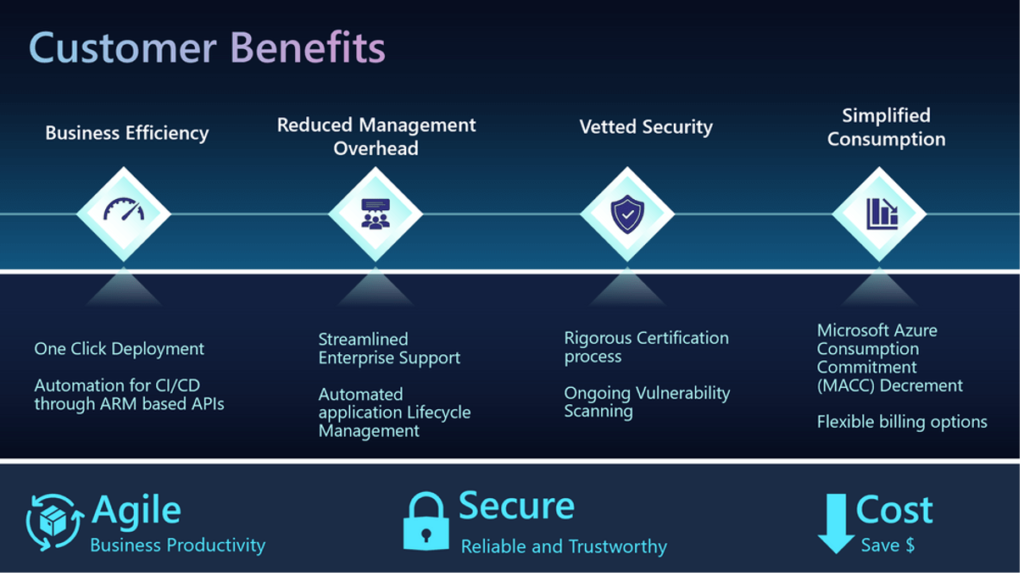
Highlighted Kubernetes Apps are Cilium Enterprise, Portworx, StormForge Optimize or Traefik Enterprise. Further information and how to get started can be found here and here.
AKS Fleet Manager
Azure Kubernetes Fleet Manager (Fleet) empowers Azure Kubernetes Service (AKS) clusters to operate in multi-cluster and large-scale scenarios. It provides the necessary capabilities to effectively manage and coordinate AKS clusters in such environments. During the Build, the new feature of orchestrating updates across multiple clusters was announced. You can now leverage updates stages, update groups, and runs. This gives you the full flexibility to manage the updates for your AKS infrastructure and create less overhead updating the actual clusters. Find all the details here.
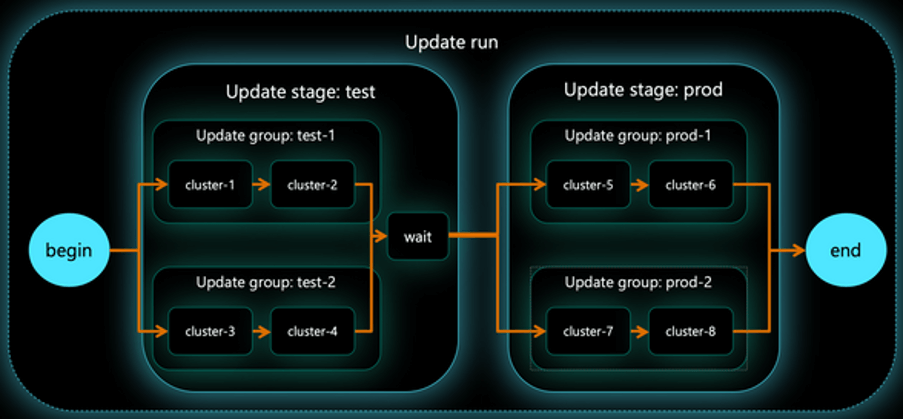
Azure Container Storage
Azure Container Storage, the industry’s first platform-managed container-native storage service in the public cloud was announced as public preview. It delivers complete storage management and orchestration capabilities to enable efficient scaling and operation of stateful applications on Azure. This ensures that your stateful applications can run smoothly and efficiently at scale. Customers will be able to focus their attention on running workloads and applications rather than managing storage. Read the full announcement here.
Azure Container Apps Jobs
With the announcement of the public preview of jobs, Azure Container Apps now supports two types of compute resources: apps and jobs.
Apps are common and the default for Container Apps. Jobs are tasks with an infinite lifespan. You can trigger jobs in three ways: manually, scheduled, and event-driven. Example scenarios for jobs are daily backups, migration tasks or event-driven. The billing is just like Container Apps by second and based on the amount of memory and CPU consumed during execution. Learn more.
Azure Functions for Cloud-native Microservices
With this public preview announcement, you can deploy containerized Azure functions into Azure Container Apps to build cloud-native apps. Further details can be found here.
Azure Linux
The CBL-Mariner project is finally generally available for AKS customers and rebranded to Azure Linux. Azure Linux is a lightweight, secure, and reliable Linux distribution build developed by Microsoft. You will benefit from its optimization for Azure and also use the same host system as used by many of Microsoft’s own services. Find all the details about Azure Linux here.
Azure Monitor managed service for Prometheus
Azure Monitor managed service for Prometheus is finally generally available. The Prometheus-based solution is the de-facto industry standard for monitoring in the cloud-native space. With the managed service you can leverage the power of the Prometheus query language (PromQL) to analyze and set alerts for the performance of monitored infrastructure and workloads. This capability enables you to perform performance analysis and receive alerts without the need to manage the underlying infrastructure. You have the flexibility to use it as a standalone service through Azure Monitor or as an integrated component within container insights and Azure Managed Grafana. This allows you to choose the approach that best suits your needs for utilizing the service. Read here for more information.
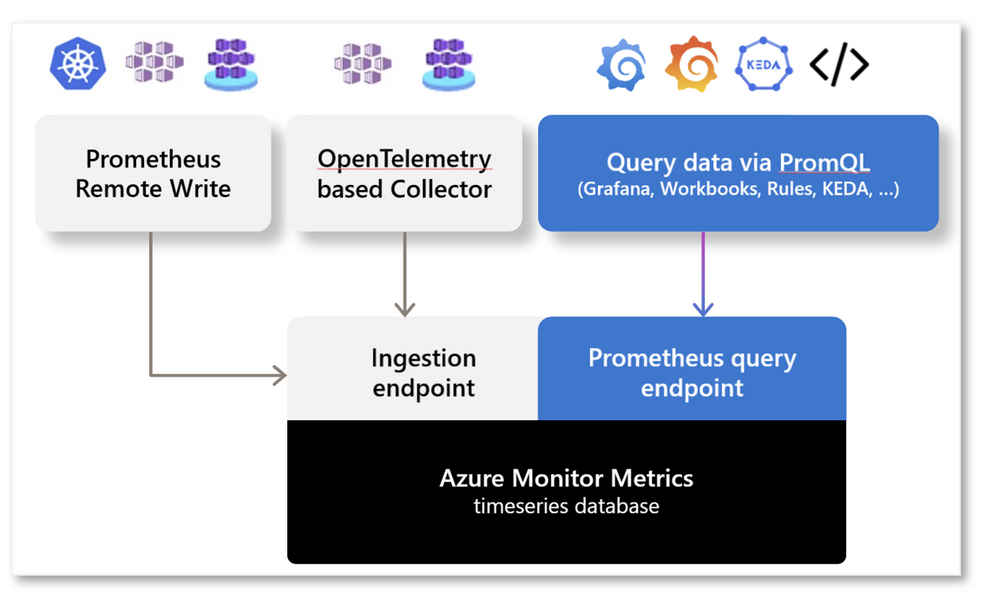
Cluster Optimization workbook for Azure Monitor container insights
The Cluster Optimization workbook for Azure Monitor Container insights enables cluster optimization by offering various capabilities. These include detecting liveness probe failures and their frequencies, identifying and grouping event anomalies that signify recent increases in event volume for easier analysis, and identifying containers with high or low CPU and memory limits and requests. It also provides suggested values for limit and request settings to enhance performance. Learn more here.
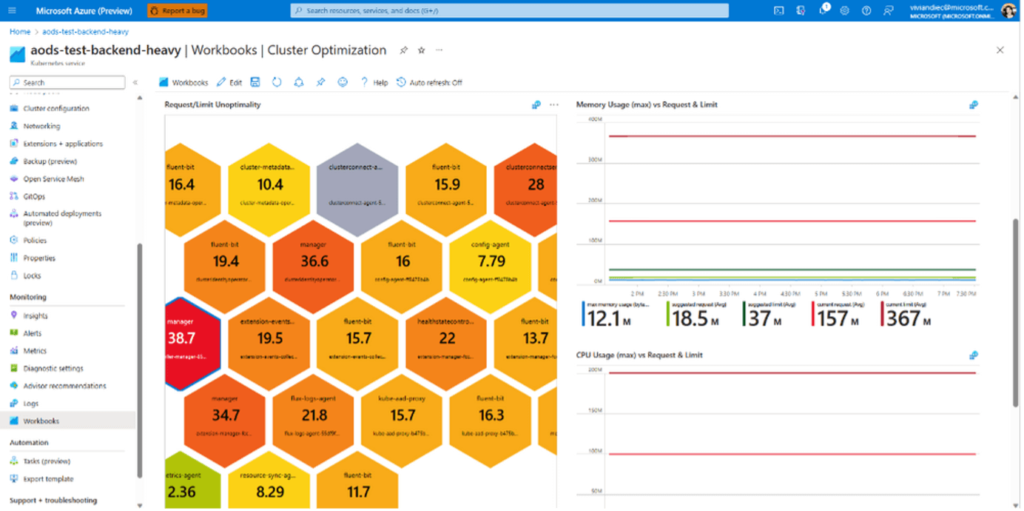
Code optimizations within Azure Monitor application insights
Code optimizations are valuable for addressing various performance issues. They can assist in resolving problems such as incorrect API usage, unnecessary allocations, exception handling, and concurrency. Additionally, code optimizations can detect anomalies in CPU or Memory behavior exhibited by your application or cloud service. Code optimizations are public preview. Read more here.
Azure Developer CLI (azd) 1.0.0 release
The Azure Developer CLI (azd) got its first generally available release announced during Microsoft Build. The command-line tool is designed to speed up the transition of your application from a local development environment to the cloud. It offers a combination of developer-friendly commands and customizable blueprint templates, making it simple and user-friendly for application developers. With azd, deploying your application becomes faster and more efficient. You can find a lot of azd blueprints in this community-driven template gallery. Learn more about the 1.0.0 release here.
If you are interested in learning more about the Azure Developer CLI make sure to register and attend our upcoming Meetup Azure Developer CLI: “azd up” – one command to rule them all on the 21st of June 2023.
Azure API Center for Centralized API Discovery and Governance
APIs are getting crucial in the modern digital world. The amount of APIs within organizations increases rapidly. Companies use different tools and technologies. The overview of existing APIs is getting lost. With the new API Center Azure offers an option to significantly improve the reusability of the APIs and the way how the APIs can be shared among the stakeholders. With this new service, companies can bring their different APIs from different places together. Learn more about this amazing feature.
Synthetic GraphQL
Another preview release announcement during Build is the option to modernize REST and SOAP APIs into GraphQL APIs to use the advantage of GraphQL. Synthetic GraphQL allows you to quickly upgrade your API to support modern client application development without affecting your existing infrastructure. All details are available here.
Microsoft Defender for APIs
Last but not least, and also released in preview during Build is Microsoft Defender for APIs. Microsoft Defender for APIs provides an overview of security issues, offers threat protection, SIEM integration and gives recommendations based on the finding, and much more.

Summary and takeaways
We had great two days with a ton of announcements, great sessions, and lots of roundtable discussions with the product groups. Sadly, we could join only virtually.
So, what were the latest trends from Microsoft Build? What should you stay up to date on? In my opinion, on the following:
- AI: Copilot is everywhere; Windows, AKS, Office, and more. Let’s see and wait for what makes sense and what is just hype.
- Optimization: Code, resource & performance optimization was a big topic with build in Azure Monitor Workbooks and Application Insights support.
- Microsoft Entra: The announced Entra External ID public preview is a thing that is worth a closer look.
Next up is the German Edition of the Microsoft Build on the 22nd of June in Munich. See you there! Our Cloud Experts Nico Meisenzahl and Martin Brandl will take part and talk about Cloud-Native & Sustainability. Check out the agenda for registration and further details.
